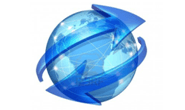Analysis
February 19, 2016
Final Thoughts
Written by John Packard
I received a comment/question over the weekend regarding our SMU Steel Buyers Sentiment Index. The comment came in the form of a LinkedIn comment to one of our posts regarding the most recent Sentiment Index announcement. The question was from a financial analyst who asked us why our Sentiment Index did not reflect the WARN notices going back to 2015 and idling of capacity at the domestic steel mills?
My response is that one should not confuse the domestic steel mills and their financial issues with that of the manufacturing and distribution community from which we gather the vast majority of our responses. Our Sentiment Index is measuring how buyers and sellers of steel (not steel mills) feel about their company’s (not the steel industry in general) ability to be successful in the current market environment as well as 3 to 6 months into the future. The steel mills do participate in our market analysis but they only represent 6 percent of the total respondents in our most recent analysis. Even so, not every mill participates and those that do tend to be more successful and they tend to interact more often with SMU than those who have issues.
Some comments from the Port of Tampa Steel Conference:
From Philipp Englin, CEO of World Steel Dynamics who told the group that the steel industry is in an “existential battle” for survival. He said there were some positive signs emerging but the U.S. mills will most likely see difficult conditions this year with some improvements in 2017. He also said that there are a couple of mills in the U.S. who are facing a critical situation which he termed “as critical as it has been since 2000.”
Mr. Tadaaki Yamaguchi, President of JFE America spoke about the lack of protectionism in Japan. “We compete” is what he told the audience. He went on to explain that they have a better product and they service their customers, “Japanese mill consistency…we are ahead of the Chinese mills.”
Roger Schagrin of Schagrin Associates (attorney for a number of the domestic steel mills) said, “Excess capacity in China is not tracking the business cycle.” He pointed out the 30 percent market penetration into the U.S. market which has resulted in the domestic mills producing at 65 percent capacity utilization rates. He also said the current duty rates will not address the problems the industry is having with China. The suggestion was made that a quota should be put in place. If not in 12-18 months a number of steel companies could go bankrupt.
Donald Cameron, Partner, Morris, Manning and Martin LLP (attorneys for end users) pointed out the carpet bombing affect of the trade suits pointing out that the domestic mills can’t support UPI and Steelscape on the west coast. Countries like Japan, Korea and Australia ship 98 percent of their product to support those industries (UPI is half owned by Korean mill and Steelscape is owned by an Australian company). He pointed out that “This is ground hog day. We are back to 1992…” He went on to explain the long list of trade actions including Trigger Prices, Voluntary Restraint Agreements, Section 201’s, etc. that got us to today. “Its a complicated world. Much more complicated steel world today than in 1992….”
As always your business is truly appreciated by all of us here at Steel Market Update.
John Packard, Publisher







